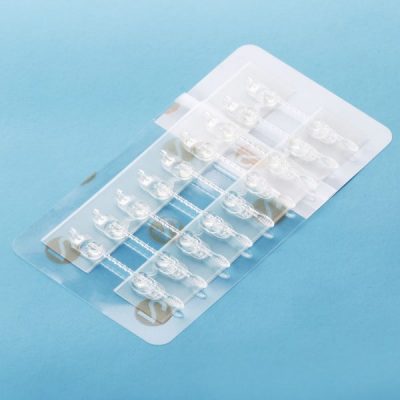The technology of wound closure has come a long way from ancient civilizations using natural materials to the advancement of modern medical technology. People’s exploration for better and faster surgical wound closure has never stopped. This article dives into the history and modern practice of wound closure, comparing traditional sutures and innovative sutureless technology.
Historical Evolution of Wound Closure
Early Civilization Techniques
The roots of wound closure can be traced back to ancient civilizations, where healers used natural materials like plant fibers, animal tendons, and leather strips to approximate wound edges. These natural material sutures played an important role in promoting healing and preventing infection when ancient people were injured in hunting and fighting. The earliest physical sutures that can be seen today are the ancient Egyptian mummy in 3000 BC.
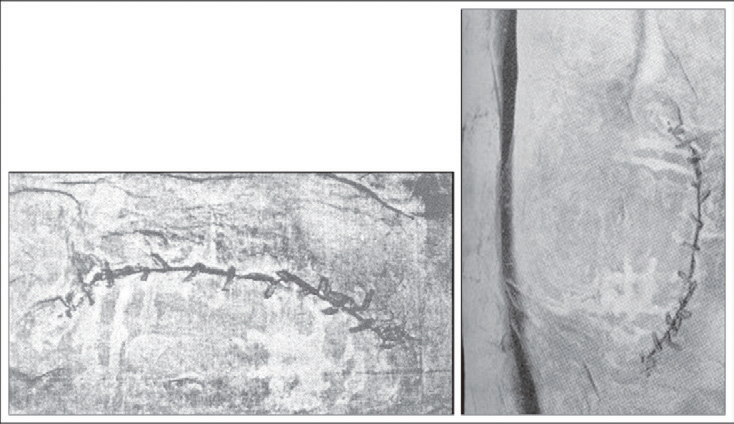
Ancient Egypt and Greece
The advancement of wound closure gained momentum in ancient Egypt and Greece. Ancient Egyptian papyrus documents described detailed suturing techniques using materials such as linen thread. Greek physicians like Hippocrates and Galen emphasized wound hygiene and introduced ligatures to minimize bleeding.
In his most famous surgical book On Head Wounds, Hippocrates, the Greek “father of medicine”, described head injuries in detail and named “cranial sutures” in detail, and proposed methods of surgery and suturing. The word “suture” is first used in this work, and the records about the operation are very detailed and the words are very precise.
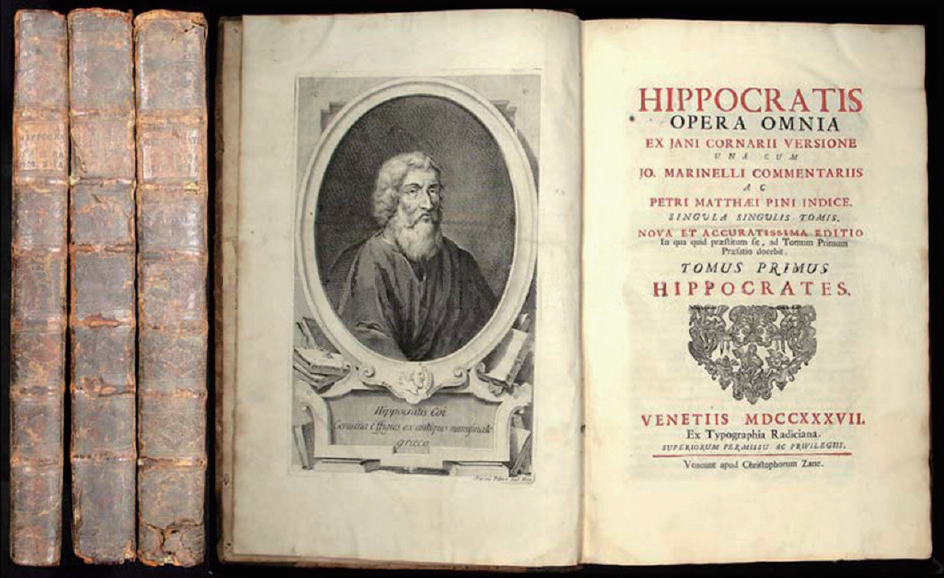
Aulus Cornelius Celsus, an ancient Roman physician, and Galen, a Roman physician in the second century AD, respectively described the technique of suturing the gut. By the 10th century, the technique of gut suture was very mature.
Renaissance and Early Modern Period
The Renaissance (14th to 17th century) marked a revival of interest in the medical field, including surgery, despite a decline in surgical knowledge during the Middle Ages in Europe. The ancient Roman physician Aulus Cornelius Celsus and the second-century Roman physician Galen separately described techniques for suturing the intestine.
Ambroise Paré (1510-1590), a famous French surgeon and anatomist, played a key role in the improvement of surgical wound closure practice. Doctor Paré made some improvements to the methods of wound closure. He introduced improved suturing techniques that can close wounds more gently and with less invasiveness, greatly reducing the risk of excessive bleeding during surgery.
During the Renaissance and Early Modern Period, sutures were made from various materials, including silk, linen, and animal intestines (catgut). While some sutures were absorbable, such as catgut, others required removal after a certain period. Surgeons of this era, drawing knowledge from ancient medical texts combined with surgical practice, developed and improved suturing techniques to better achieve precise wound closure with minimal tissue damage.

Development of wound closure devices from the 20th century to the present
Wound closure has advanced very significantly in technology and innovation from the early 20th century to today. More surgical wound closure devices have been developed to improve patient treat results, reduce complications, and benefit the wound healing process.
Synthetic Suture
In the early 20th century, synthetic suture materials such as nylon and polyester became available. Compared to natural materials such as silk and gut, these synthetic materials offer higher tensile strength, reduced tissue rejection, and enhanced knot-tying security.
Modern sutures are mostly made of synthetic fibers, including polyglycolic acid, polylactic acid, polydioxanone, nonabsorbable nylon, and polypropylene. The newer concept is to coat sutures with antimicrobial substances to reduce the chance of wound infection.
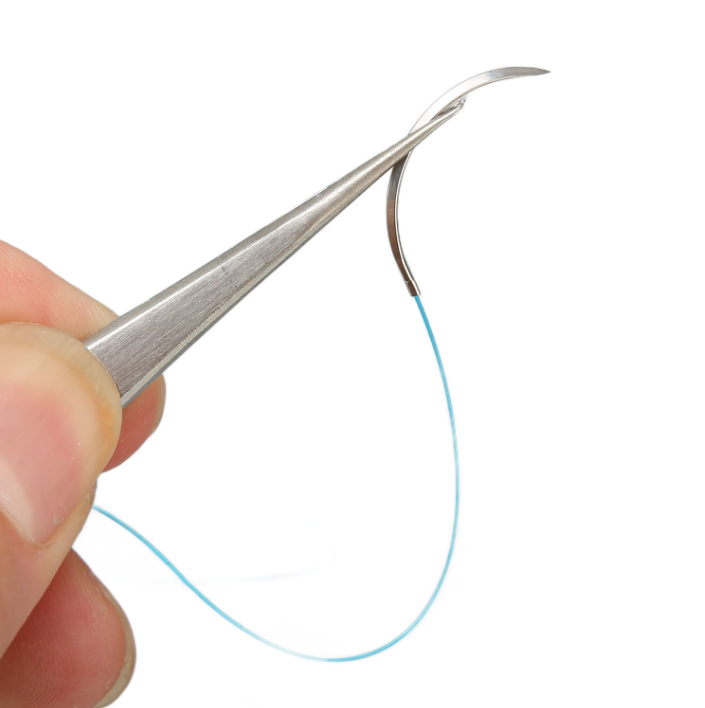
Surgical Staplers
Surgical staplers were introduced in the early 20th century and quickly gained popularity. Staplers use metal or plastic staples to hold the wound edges together. Staples provide faster closure which is useful when the wound need to be closed quickly to prevent continuous bleeding. Surgical Staples are commonly used in gastrointestinal anastomoses and closure of chest and skin incisions.
Johnson & Johnson’s Ethicon division and Medtronic are two of the largest makers of surgical staplers
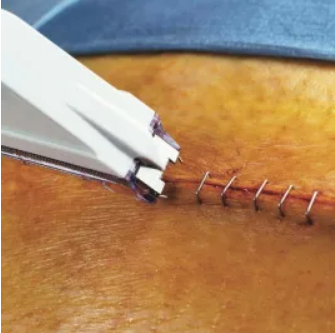
Absorbable Suture
Synthetic absorbable sutures such as polyglycolic acid (PGA) and polylactic acid 910 (Vicryl) became available in the mid-20th century. Absorbable sutures fully break down over time, so they don’t need to be removed, reducing patient discomfort.
Top 5 Vendors in the Absorbable Sutures Market From 2019 to 2023 is B. Braun, Boston Scientific, DemeTECH, Johnson & Johnson, and Medtronic.
Wound Closure Strips
Wound Closure Strips have been widely used in wound closure since the 1960s. It provides easy and non-invasive closure options, especially for superficial wounds and the areas with minimal tension. In the minor injuries, wound closure tape can be used instead of sutures, they result in less scarring and are easier to care for. The most well-known brand of wound closure strip product is Nexcare™ Steri-Strip™ from 3M.
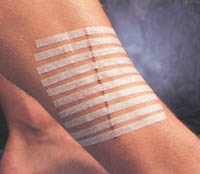
Tissue Glue
In the 80s, cyanoacrylate-based tissue glues were introduced for wound closure. Tissue glue bonds wound edges, and promotes faster healing. Tissue glue is especially useful for small lacerations and incisions, but less so for longer, more tense, or more exudate incisions. There are many tissue glue brands on the market, such as Histoacryl® from B. Braun, LiquiBand® from Covidien, DERMABOND™ PRINEO™ from Ethicon.
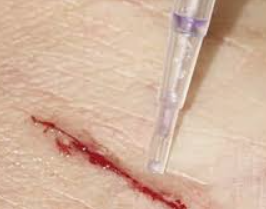
New type Non-invasive Wound Closure Device
In the 21st century, a new type of non-invasive wound closure device has gradually been recognized by people and entered into clinical application, so that people can have more choices and obtain more effective and comfortable wound closure solutions.
Traditional invasive wound closure methods usually involve sutures, staples, etc., which may cause discomfort, scarring, and longer healing times. Non-invasive methods of closure, such as tape and tissue glue, have limitations and are generally not suitable for larger, longer, and higher-tense surgical wounds. The new non-invasive wound closure device can not only avoid secondary damage and needle hole scars caused by sutures and skin nails, reduce scar hyperplasia, but also solve the problem that the application range of tapes and tissue glues is too narrow.
These new non-invasive closure devices use mechanical closure structures to close epidermal wounds/incisions, and the mainstream structures include Zipper structure, Pull-to-Close structure and Screw-to-Close structure.
There are currently several brands of new types non-invasive closure devices, including: Zip Skin Closure, Topclosure, Dermaclip, MicroMend, Clozex, and BI-FIX Surgical Wound Closure Set of Haichuang Medical. BI-FIX adopts an exclusive screw-to-closure structure, which is more precise in operation and very convenient to adjust than the pull-to-close structure.
The new non-invasive wound closure device has several significant advantages
- Efficiency: These mechanical closure mechanisms close wounds quickly and efficiently, saving valuable time during surgical procedures or wound management.
- Minimal Trauma: The non-invasive nature of these closure devices minimizes tissue trauma, reduces patient discomfort and promotes faster healing.
- Reduced Risk of Infection: The good seal of the closure device prevents contamination from entering the wound, thereby effectively reducing the risk of infection.
- Enhanced Esthetics: Non-invasive closure devices often result in smaller scars compared to traditional sutures or staples, which can help improve cosmetic outcomes.
- Versatility: The new closure device goes beyond Wound Closure Strips and Tissue Glue and can be used in a variety of wound types, including longer, more tense surgical incisions, as well as lacerations caused by accidents.
Applications and Future Prospects
The new non-invasive wound closure device can be used in various surgical departments including general surgery, orthopedics, obstetrics, pediatrics, and so on. They are especially beneficial for the closure of wounds in challenging anatomical locations or areas with high tension.
As medical technology continues to advance, these new closure devices may be further developed with additional features such as antimicrobial coatings, integrated sensors and personalized size options. These innovations enhance overall functionality and usability, leading to better patient outcomes and experiences.
All in all, the new non-invasive wound closure device shows a unique innovation in the field of medical wound closure, which provides an efficient, comfortable and effective wound management solution, points out the future direction of wound care, and contributes to the improvement of patients’ comfort and healing aesthetics.
From ancient times to the present, the continuous development of various wound closure devices from natural material sutures to synthetic material sutures, absorbable sutures, tissue glue, surgical staples, new non-invasive wound closure devices, etc., reflects people’s desire for quicker, safer, and better healing results. This is a constant search for effective and more patient-friendly methods. These technological advances have transformed surgical practice, enabling healthcare professionals to adopt wound closure methods according to individual patient needs and specific surgical scenarios. Just as the constant pursuit for new treatment methods and better treatment results, innovation is always the pursuit of Haichuang Medical: Innovation Defines Life.

